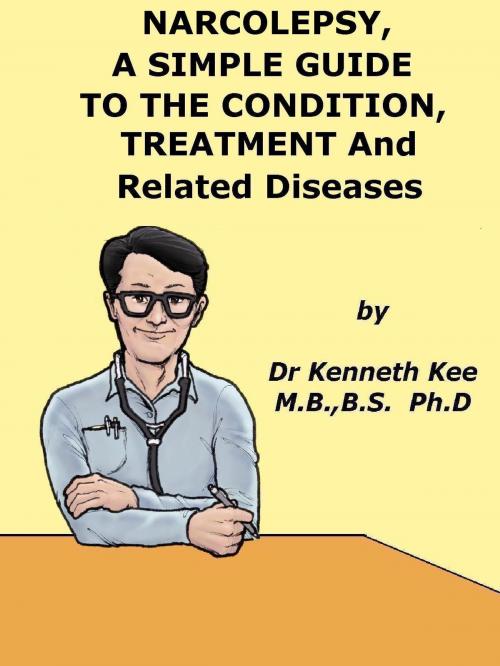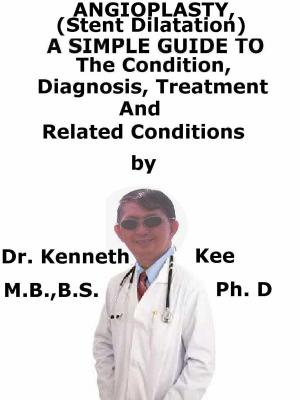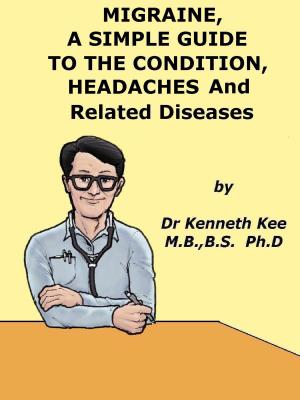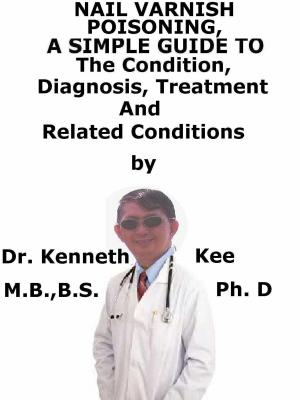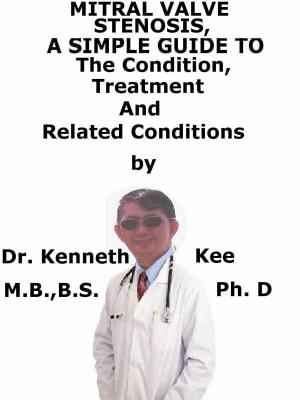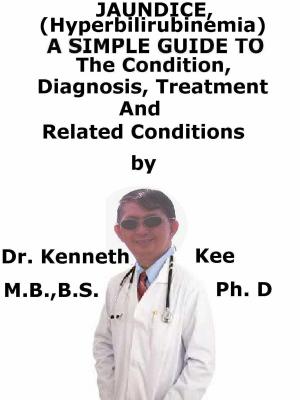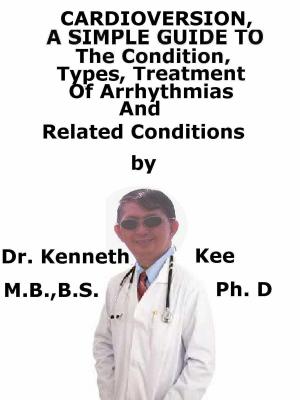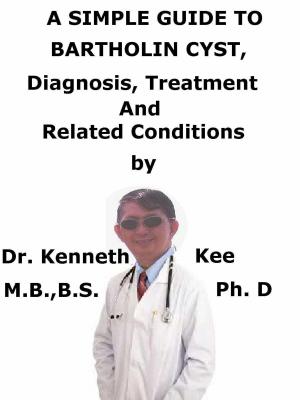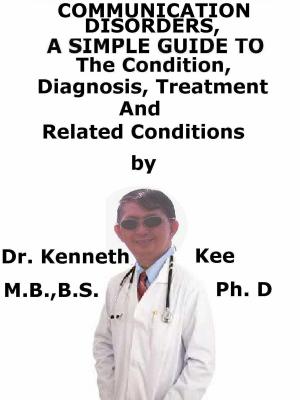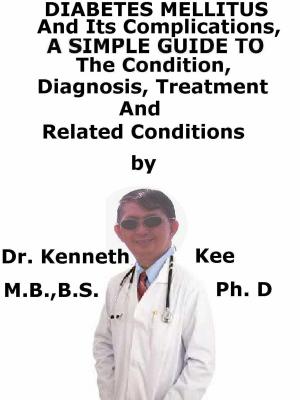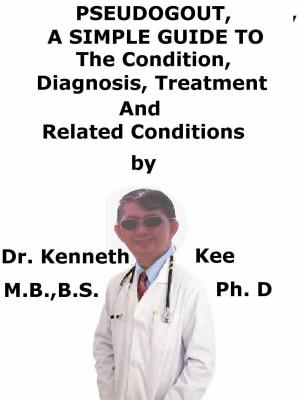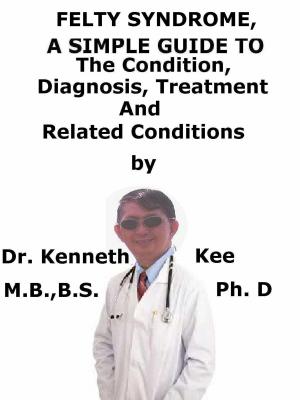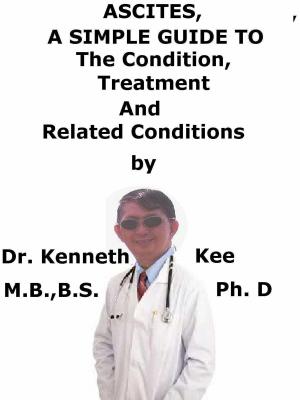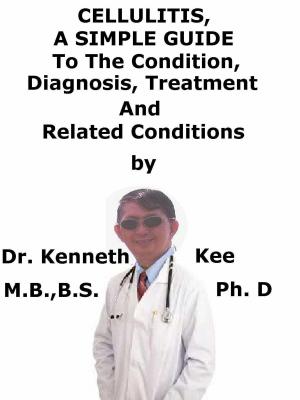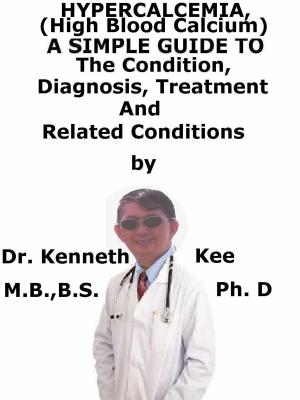Narcolepsy, A Simple Guide to the Condition, Treatment and Related Diseases
Nonfiction, Health & Well Being, Medical, Specialties, Internal Medicine, Neurology, Health| Author: | Kenneth Kee | ISBN: | 9781311768360 |
| Publisher: | Kenneth Kee | Publication: | December 11, 2014 |
| Imprint: | Smashwords Edition | Language: | English |
| Author: | Kenneth Kee |
| ISBN: | 9781311768360 |
| Publisher: | Kenneth Kee |
| Publication: | December 11, 2014 |
| Imprint: | Smashwords Edition |
| Language: | English |
Narcolepsy causes periods of extreme daytime sleepiness.
The disorder also may cause muscle weakness.
Most people who have narcolepsy have low levels of hypocretin.
This is a chemical in the brain that helps promote waking
Narcolepsy is believed to be due to the auto-immune disease
The immune system mistakenly attacks the body's tissues.
Low levels of histamine promote sleepiness.
Often the brain show evidence of mental cloudiness
The four main symptoms of Narcolepsy are cataplexy,
Extreme daytime sleepiness, hallucinations and sleep paralysis
Narcoleptics may have episodes where they fall asleep suddenly
Sleep may also occur in the middle of talking or another activity
Maintain a regular sleep schedule in a warmed environment
Avoid alcohol, caffeine-containing beverages and distractions
Avoid large, heavy meals just before sleeping
Take antidepressants and stimulants while working
-An original poem by Kenneth Kee
Interesting Tips about the Narcolepsy
A Healthy Lifestyle
1. Take a well Balanced Diet
2. Treatment of Narcolepsy
a. Non medicinal methods:
i. Explanation to family and patient with advice on how to cope with the sleepiness problem
ii. Instructions on how to regulate sleep habits
iii. Light therapy may help you keep a regular sleep and wake schedule
b. Medicinal methods:
i. Pyschostimulants such as amphetamines, ephedrine, pseudoephedrine in dosages enough to maintain functioning
ii. Antidepressant of tricyclic type may help
3. Keep bones and body strong
Bone marrow produces our blood
Eat foods rich in calcium like yogurt, cheese, milk, and dark green vegetables.
Eat foods rich in Vitamin D, like eggs, fatty fish, cereal, and fortified milk.
Eat food rich in Vitamins B and C such as green vegetables and fruits
Zinc and other minerals are important to the body
4. Get enough rest and Sleep
Avoid stress and tension
5. Exercise and stay active.
It is best to do weight-bearing exercise such as walking, jogging, stair climbing, dancing, or lifting weights for 2½ hours a week.
One way to do this is to be active 30 minutes a day at least 5 days a week.
Begin slowly especially if a person has not been active.
6. Do not drink more than 2 alcohol drinks a day for a man or 1 alcohol drink a day for a woman.
Alcohol use also increases the chance of falling and breaking a bone.
Alcohol can affect the neurons and brain cells.
7. Stop or do not begin smoking.
It also interferes with blood supply and healing.
Chapter 1
Narcolepsy
Narcolepsy is a condition characterized by sleeping at inappropriate times with intense feeling of sleepiness which ironically results in normal number of hours of sleep.
Narcolepsy is a disorder that causes periods of extreme daytime sleepiness.
The disorder also may cause muscle weakness.
Most people who have narcolepsy have low levels of hypocretin.
This is a chemical in the brain that helps promote wakefulness.
Narcolepsy is usually caused by the following:
1. There is a familial incidence of 60 times in a close family member.
2. There is also a one in twenty possibility of inheriting lifelong syndrome
It is a rare condition with onset in adolescence or young adults.
It is much more common in men than in women.
The danger of inappropriate sleepiness is that it may result in poor productivity, social isolation, confusion and depression.
TABLE OF CONTENT
Introduction
Chapter 1 Narcolepsy
Chapter 2 Interesting Facts about Narcolepsy
Chapter 3 Treatment of Narcolepsy
Chapter 4 Insomnia
Chapter 5 Obstructive Sleep Apnea
Chapter 6 Hypoglycemic Coma
Chapter 7 Coma
Chapter 8 Subarachnoid Hemorrhage
Narcolepsy causes periods of extreme daytime sleepiness.
The disorder also may cause muscle weakness.
Most people who have narcolepsy have low levels of hypocretin.
This is a chemical in the brain that helps promote waking
Narcolepsy is believed to be due to the auto-immune disease
The immune system mistakenly attacks the body's tissues.
Low levels of histamine promote sleepiness.
Often the brain show evidence of mental cloudiness
The four main symptoms of Narcolepsy are cataplexy,
Extreme daytime sleepiness, hallucinations and sleep paralysis
Narcoleptics may have episodes where they fall asleep suddenly
Sleep may also occur in the middle of talking or another activity
Maintain a regular sleep schedule in a warmed environment
Avoid alcohol, caffeine-containing beverages and distractions
Avoid large, heavy meals just before sleeping
Take antidepressants and stimulants while working
-An original poem by Kenneth Kee
Interesting Tips about the Narcolepsy
A Healthy Lifestyle
1. Take a well Balanced Diet
2. Treatment of Narcolepsy
a. Non medicinal methods:
i. Explanation to family and patient with advice on how to cope with the sleepiness problem
ii. Instructions on how to regulate sleep habits
iii. Light therapy may help you keep a regular sleep and wake schedule
b. Medicinal methods:
i. Pyschostimulants such as amphetamines, ephedrine, pseudoephedrine in dosages enough to maintain functioning
ii. Antidepressant of tricyclic type may help
3. Keep bones and body strong
Bone marrow produces our blood
Eat foods rich in calcium like yogurt, cheese, milk, and dark green vegetables.
Eat foods rich in Vitamin D, like eggs, fatty fish, cereal, and fortified milk.
Eat food rich in Vitamins B and C such as green vegetables and fruits
Zinc and other minerals are important to the body
4. Get enough rest and Sleep
Avoid stress and tension
5. Exercise and stay active.
It is best to do weight-bearing exercise such as walking, jogging, stair climbing, dancing, or lifting weights for 2½ hours a week.
One way to do this is to be active 30 minutes a day at least 5 days a week.
Begin slowly especially if a person has not been active.
6. Do not drink more than 2 alcohol drinks a day for a man or 1 alcohol drink a day for a woman.
Alcohol use also increases the chance of falling and breaking a bone.
Alcohol can affect the neurons and brain cells.
7. Stop or do not begin smoking.
It also interferes with blood supply and healing.
Chapter 1
Narcolepsy
Narcolepsy is a condition characterized by sleeping at inappropriate times with intense feeling of sleepiness which ironically results in normal number of hours of sleep.
Narcolepsy is a disorder that causes periods of extreme daytime sleepiness.
The disorder also may cause muscle weakness.
Most people who have narcolepsy have low levels of hypocretin.
This is a chemical in the brain that helps promote wakefulness.
Narcolepsy is usually caused by the following:
1. There is a familial incidence of 60 times in a close family member.
2. There is also a one in twenty possibility of inheriting lifelong syndrome
It is a rare condition with onset in adolescence or young adults.
It is much more common in men than in women.
The danger of inappropriate sleepiness is that it may result in poor productivity, social isolation, confusion and depression.
TABLE OF CONTENT
Introduction
Chapter 1 Narcolepsy
Chapter 2 Interesting Facts about Narcolepsy
Chapter 3 Treatment of Narcolepsy
Chapter 4 Insomnia
Chapter 5 Obstructive Sleep Apnea
Chapter 6 Hypoglycemic Coma
Chapter 7 Coma
Chapter 8 Subarachnoid Hemorrhage
